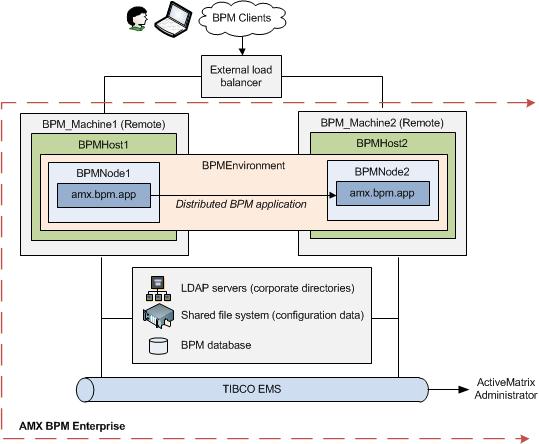A Simple Example: Adding a New Server Node to a Distributed System
Editing and using the build.properties file can be demonstrated by a simple example.
Suppose you have installed and configured a distributed BPM system:

You now want to add a second Server node to BPM_Machine2.
Procedure
Copyright © Cloud Software Group, Inc. All rights reserved.
